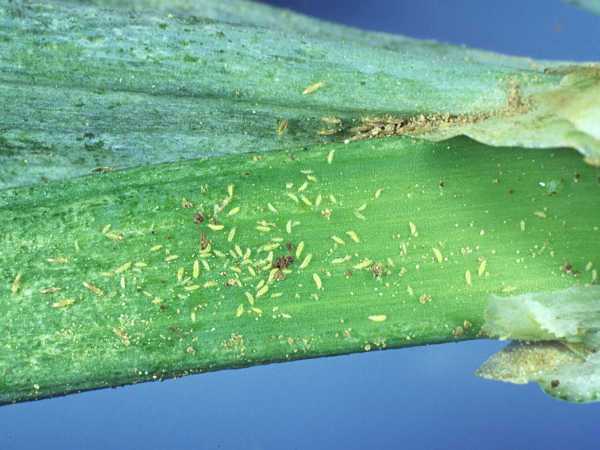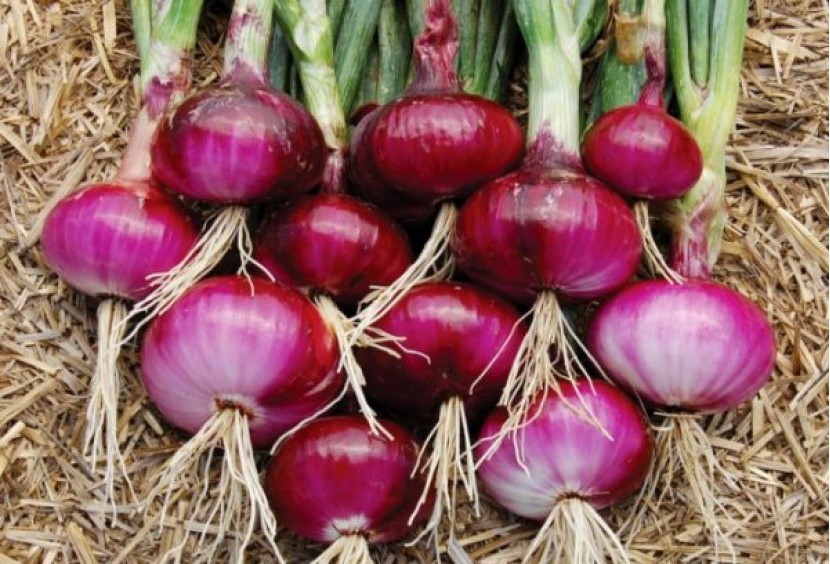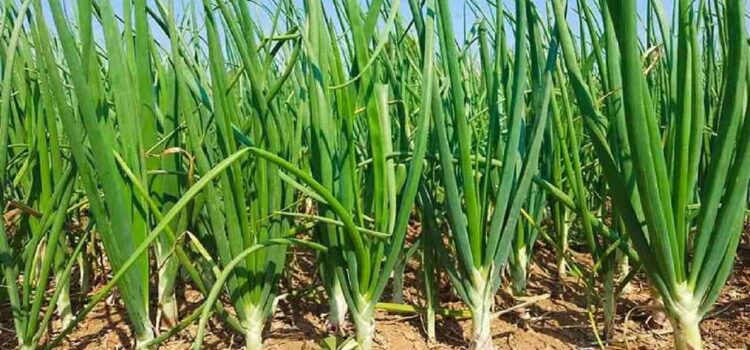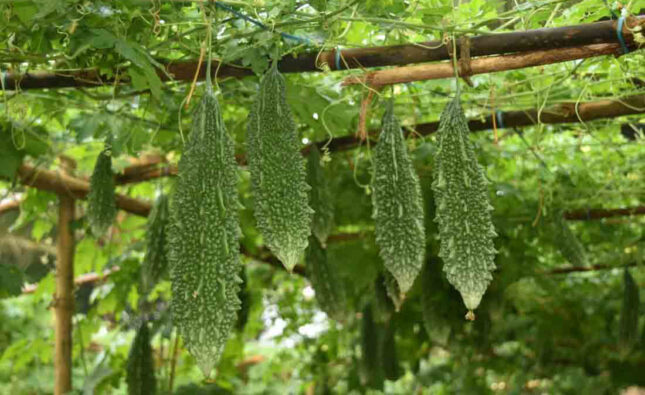Onion Cultivation: A Comprehensive Guide
Introduction:
Onions (Allium cepa) are one of the most widely cultivated and consumed vegetables in the world. Known for their pungent flavor and culinary versatility, onions play a vital role in countless dishes and cuisines. Cultivating onions can be a rewarding endeavor for both commercial farmers and home gardeners, as they are relatively easy to grow and have a long shelf life when properly stored. In this comprehensive guide, we will delve into the various aspects of onion cultivation, from selecting the right variety to harvesting and post-harvest management.
Onions come in different varieties, ranging from white, yellow, and red to sweet onions, each offering its unique taste and intensity. Originating in Asia, onions have been cultivated for thousands of years and have played a significant role in the history of human civilization. They were prized by ancient Egyptians who believed that their spherical shape and concentric layers symbolized eternity and eternal life. Onions were also used medicinally in ancient Greece and Rome for their purported health benefits, such as aiding digestion and boosting strength.
In addition to their culinary and medicinal uses, onions are an essential component of many traditional folk remedies across cultures. They are believed to possess antimicrobial properties, making them helpful in treating common colds, coughs, and respiratory infections. Moreover, onions are rich in vitamins, minerals, and antioxidants, contributing to their reputation as a health-promoting vegetable.
Cultivating onions is relatively straightforward, and they can be grown in a variety of climates and soil types. They are usually planted as sets or seeds, and their growth cycle spans several months until they are ready for harvest. After harvesting, onions can be stored for extended periods in a cool and dry environment, making them available year-round.
Overall, the onion’s versatility, nutritional value, and unique taste have solidified its place as a staple ingredient in cuisines worldwide. Whether sautéed, caramelized, pickled, or raw, onions continue to add depth and flavour to countless dishes, making them an essential part of the culinary landscape across the globe.
- Choosing the Right Onion Variety: The first step in successful onion cultivation is choosing the appropriate variety based on your climate, soil type, and intended use. There are three main types of onions:
- Short-Day Onions Verities:
Short-day onions are a type of onion variety that requires a relatively shorter duration of daylight to initiate bulb formation. These onions are well-suited for growing in regions with mild winters and shorter daylight hours. Here are some popular short-day onion varieties:
- Texas Early Grano 502 PRR:
This short-day onion variety is known for its early maturity and excellent storage capacity. It produces large, sweet, and mild-flavored bulbs, making it a favorite in many kitchens.
- Red Creole:
Red Creole onions are a popular short-day variety known for their attractive deep red color and strong flavor. They are commonly used in Cajun and Creole cuisine.
- Yellow Granex (Vidalia Onion):
This is a well-known short-day onion variety, famous for its sweet and mild taste. Vidalia onions from Georgia, USA, are a type of Yellow Granex onion.
- Crystal Wax:
Crystal Wax onions are small to medium-sized short-day onions with white flesh and a mild flavor. They are often used in pickling and other culinary applications.
- Burgundy:
Burgundy onions are a short-day variety with a deep red/purple color and a sweet flavor. They add vibrant color and taste to salads and other dishes.
- Sweet Red:
As the name suggests, Sweet Red onions are known for their sweet and mild taste. They are a popular choice for salads and raw preparations.
- Rio Bravo:
Rio Bravo onions are short-day onions that produce large, globe-shaped bulbs with a mild and sweet flavor.
- Grano 1015Y:
Developed in Texas, this short-day onion variety is known for its high yield, sweet taste, and large bulb size. It is a widely grown commercial onion in the southern United States.
- Texas Super Sweet:
This short-day variety lives up to its name with its exceptionally sweet taste and crispy texture. It is commonly used in salads and sandwiches.
Short-day onions are typically planted in the fall or early winter in regions with mild climates. They start to form bulbs as the days get shorter, and they are usually ready for harvest in late spring or early summer. These onions are an essential ingredient in various culinary dishes and are favored for their distinct flavors and storage capabilities.
1. Long-Day Onions Verities:
Long-day onions are a type of onion variety that requires longer daylight hours to trigger bulb formation. These onions are well-suited for growing in regions with cooler climates and longer daylight periods during the summer. Here are some popular long-day onion varieties:
-
Yellow Spanish:
Yellow Spanish onions are a well-known long-day variety, appreciated for their large size and strong, pungent flavor. They are often used in cooking and are a staple in many savory dishes.
-
Northern Red:
Northern Red onions are a long-day variety known for their attractive red color and moderately sweet taste. They are commonly used in salads and raw dishes.
-
Walla Walla:
Walla Walla onions are famous for their exceptionally sweet and mild flavor. They are large, globe-shaped onions with a light brown skin and are commonly grown in the Walla Walla Valley of Washington State, USA.
-
Ailsa Craig:
Ailsa Craig onions are a popular long-day variety originating from Scotland. They are known for their large size, sweet taste, and excellent storage qualities.
-
Stuttgart:
Stuttgart onions are a long-day variety grown in Germany and other parts of Europe. They are medium to large-sized onions with a mild flavor and are commonly used in cooking.
-
Rossa di Tropea:
This is a long-day red onion variety from Italy. It has a sweet and mild flavor and is often used in salads and raw dishes.
-
Red Zeppelin:
Red Zeppelin onions are a long-day variety known for their deep red color and mild, sweet taste. They are often used in salads and for grilling.
-
Copra:
Copra onions are a long-day variety with a strong flavor and good storage capacity. They are commonly used in cooking and can withstand long storage periods.
-
Cabernet:
Cabernet onions are a long-day variety known for their red-purple color and mild taste. They add a touch of color and sweetness to various dishes.
Long-day onions are usually planted in early spring, and their bulb formation is triggered as the days get longer and warmer. They typically mature and are ready for harvest in late summer or early fall. These onions are widely used in various cuisines around the world and are valued for their robust flavors and versatility in the kitchen.
2. Site Selection and Soil Preparation:
Site Selection:
Choosing the right site is crucial for successful onion cultivation. Onions require full sunlight, so selecting a location with at least 6 to 8 hours of direct sunlight daily is essential. The site should also have good air circulation to prevent moisture-related diseases. Additionally, it’s best to avoid areas prone to waterlogging, as onions prefer well-drained soils. A gently sloping site can help with proper water drainage.
Soil Preparation:
Preparing the soil adequately is vital to create a favorable environment for onion growth. Onions thrive in loose, well-draining soils with good fertility. Here are the steps for soil preparation:
-
Soil Testing:
Before planting, conduct a soil test to determine the pH level and nutrient content of the soil. Onions prefer a slightly acidic to neutral pH range of 6.0 to 7.5.
-
Weed Removal:
Clear the planting area of any existing weeds or vegetation. Weeds compete for nutrients and can hinder onion growth.
-
Tilling:
Use a tractor or hand tiller to loosen the soil to a depth of about 8 to 10 inches. This process helps improve soil aeration and drainage.
-
Organic Matter:
Incorporate well-rotted compost or organic matter into the soil. This will enrich the soil with essential nutrients and improve its structure.
-
Fertilization:
Based on the soil test results, apply a balanced fertilizer with a higher phosphorus (P) content. Phosphorus promotes root development, which is crucial for onion bulb formation.
-
Soil Levelling:
Level the soil surface to ensure uniform planting and irrigation.
-
Raised Beds:
Consider creating raised beds, especially in areas with heavy rainfall or poor drainage. Raised beds help improve drainage and prevent waterlogging.
-
Soil Raking:
Rake the soil to create a fine, even surface for planting.
3. Onion Growing Period in India
In India, the onion growing season varies depending on the region and climate. Onions are grown as both winter and summer crops in different parts of the country. Here are the general onion showing times for different regions in India:
- Rabi Season (Winter Crop):
- Planting Time: The main onion planting season for the Rabi crop is from late September to November, with variations depending on the region.
- Harvesting Time: The onions from the Rabi crop are usually ready for harvest from late January to April.
- Kharif Season (Summer Crop):
- Planting Time: The Kharif onion crop is planted during the early summer months, mainly from April to July.
- Harvesting Time: The onions from the Kharif crop are typically ready for harvest from late August to October.
4. Planting Onions:
Onions can be grown from seeds, sets (small bulbs), or transplants. Each method has its advantages:
- Seeds: Start onion seeds indoors 8-10 weeks before the last expected frost date. Transplant the seedlings outdoors once the soil is workable and temperatures are consistently above freezing.
- Sets: Sets are small, dormant onion bulbs that can be directly planted in the ground during the early spring. They are easier to plant but may have a higher chance of bolting (prematurely flowering).
- Transplants: Nursery-raised onion seedlings can be purchased and transplanted directly into the garden. They offer a head start and can be planted once the soil is ready.
5. Planting Depth and Spacing:
Plant onion sets or transplants about 1 inch deep in the soil, leaving the tips just above the surface. Proper spacing is crucial for bulb development. Space the plants 4-6 inches apart in rows with 12-18 inches between rows, depending on the variety.
6. Fertilization & Manuring:
Onions require adequate nutrients for healthy growth and the development of quality bulbs. Fertilization and manuring play a crucial role in providing the necessary nutrients to the onion plants. Here are the recommended doses for fertilization and manuring in onion cultivation:
1. Organic Manure:
Before planting, incorporate well-rotted organic manure, such as compost or farmyard manure, into the soil. This helps improve soil structure, enhances nutrient content, and promotes better water retention. Apply about 10 to 15 tons of organic manure per hectare (or 4 to 6 tons per acre) to provide a good foundation for the onion crop.
2. Nitrogen (N):
Nitrogen is essential for promoting leafy growth, and it is especially crucial during the early stages of onion development. The recommended nitrogen dose for onion cultivation is typically divided into multiple applications:
- Apply about 40 to 50 kg of nitrogen per hectare (or 16 to 20 kg per acre) as a basal dose before planting or at the time of planting.
- Follow this up with two to three top-dressings of nitrogen at regular intervals during the growing season. For each top-dressing, apply about 25 to 30 kg of nitrogen per hectare (or 10 to 12 kg per acre).
3. Phosphorus (P):
Phosphorus is essential for root development and bulb formation. Add phosphorus-rich fertilizers before planting:
- Apply about 50 to 60 kg of phosphorus per hectare (or 20 to 24 kg per acre) as a basal dose.
4. Potassium (K):
Potassium helps in bulb enlargement and improves onion’s resistance to diseases and environmental stresses. The potassium dose for onions is generally given as a basal application:
- Apply about 30 to 40 kg of potassium per hectare (or 12 to 16 kg per acre) before planting.
5. Micronutrients:
Onions may also benefit from micronutrient supplementation, especially if deficiencies are observed in the soil or plants. Common micronutrients used in onion cultivation include zinc, boron, and copper. The recommended doses vary based on soil test results and the severity of deficiencies.
6. Weed Control:
Weed control chemicals, also known as herbicides, are used to manage and eliminate weeds in agricultural practices, including onion cultivation. Different herbicides have specific modes of action and application methods. It’s important to follow the manufacturer’s instructions and safety guidelines when using these chemicals. Here are some common types of weed control chemicals and their application in onion cultivation:
-
Pre-emergence herbicides:
Pre-emergence herbicides are applied before the weed seeds germinate, forming a barrier in the soil to prevent weed growth. They are typically applied just after planting onions and before weed emergence. These herbicides do not affect established plants. Common pre-emergence herbicides used in onion cultivation include:
- Pendimethalin b. Oxyfluorfen c. Trifluralin d. Dimethenamid-P
- Post-emergence herbicides: Post-emergence herbicides are applied after the weeds have emerged and are actively growing. They target the already established weeds while minimizing damage to the crop. When using post-emergence herbicides in onion fields, care should be taken to avoid direct contact with the onion plants. Common post-emergence herbicides used in onion cultivation include:
- Glyphosate b. Clethodim c. Fenoxaprop-P d. Sethoxydim
- Non-selective herbicides:
Non-selective herbicides target and kill all vegetation they come into contact with. These are typically used for spot treatments and should be applied with extreme caution to avoid damaging onion plants. They are helpful for controlling perennial weeds that are difficult to manage with selective herbicides. Common non-selective herbicides include:
- Glyphosate (commonly used as a non-selective post-emergence herbicide) b. Glufosinate- ammonium
Application methods for weed control chemicals in onion cultivation:
- Pre-plant incorporation:
Some pre-emergence herbicides are mixed into the soil before planting the onions. The field is then thoroughly cultivated to incorporate the herbicide into the soil.
- Pre-emergence surface application:
Pre-emergence herbicides are applied to the soil surface after planting the onions but before weed emergence. This forms a protective barrier preventing weed seedlings from growing.
- Post-emergence directed application:
Post-emergence herbicides are applied directly to the weed foliage while avoiding direct contact with the onion plants. Careful application is essential to minimize crop damage.
- Spot treatment:
non-selective herbicides can be applied in small amounts directly to specific weed-infested areas. This method is useful for controlling weeds that may emerge after the initial application.
8. Disease and Pest Management:
Disease and pest control in onion cultivation often involves the use of specific chemicals known as fungicides for disease control and insecticides for pest control. Here are some common disease and pest control chemicals used in onion cultivation, along with their treatments:
1. Fungicides for Disease Control:
- Mancozeb:
Mancozeb is a broad-spectrum fungicide effective against various fungal diseases, including onion downy mildew and purple blotch. It should be applied preventatively before the onset of disease and reapplied according to the label instructions. b. Copper-based fungicides: Copper-based fungicides, such as copper sulfate or copper hydroxide, are commonly used to control bacterial and fungal diseases in onions, like bacterial blight and damping-off. Apply these fungicides following label directions, and avoid excessive use, as copper can accumulate in the soil. c. Azoxystrobin: This fungicide is effective against fungal diseases like white rot and botrytis leaf blight. It offers both preventive and curative action and should be applied as per label recommendations.

2. Insecticides for Pest Control:
- Pyrethroids:
Pyrethroids, like lambda-cyhalothrin and cypermethrin, are commonly used insecticides for controlling various onion pests, including onion thrips and onion maggots. They have both contact and ingestion activity against pests. b. Spinosad: Spinosad is a natural insecticide derived from a soil bacterium and is effective against thrips, caterpillars, and other insect pests in onions. It is considered less harmful to beneficial insects. c. Chlorpyrifos: Chlorpyrifos is an organophosphate insecticide effective against a wide range of insect pests, including onion flies. It should be used with caution and following safety guidelines due to its potential toxicity to humans and wildlife.

Application of Disease and Pest Control Chemicals:
-
Timing:
Apply the fungicides and insecticides at the correct stages of onion growth and when the target pests or diseases are most susceptible. Early prevention is crucial to minimize the impact of pests and diseases.
-
Dilution and Mixing:
Follow the manufacturer’s instructions for dilution rates and mixing procedures. Always use the recommended amount of chemical to avoid over-application and minimize the risk of crop damage and pesticide resistance.
-
Application Method:
Spray the chemicals uniformly over the onion foliage, ensuring complete coverage. Use proper spraying equipment and techniques to avoid drift and ensure effective pest and disease control.
-
Safety Precautions:
Wear appropriate protective clothing, including gloves, goggles, and a mask, while handling and applying chemicals. Follow safety guidelines to protect yourself, others, and the environment.
-
Integrated Pest Management (IPM):
While chemical control is one aspect, it is essential to integrate multiple pest and disease management strategies. IPM involves using a combination of cultural practices, biological control, and chemical control to achieve effective and sustainable pest and disease management.
9. Bulb Formation and Harvesting:
Onions will form bulbs as the days lengthen and temperatures increase. Signs of maturity include the yellowing and wilting of the foliage. Once about half of the tops have fallen over naturally, the onions are ready for harvesting. Carefully lift the bulbs from the soil and allow them to cure in a warm, dry, and well-ventilated area for 2-3 weeks.

10. Post-Harvest Handling:
After curing, remove any remaining dirt and trim the tops to about 1 inch above the bulb. Store onions in a cool, dry, and well-ventilated place. Properly stored onions can last for several months.

Conclusion:
Onion cultivation can be a fulfilling and rewarding experience, whether you are a small-scale gardener or a commercial farmer. By following the guidelines outlined in this comprehensive guide, you can successfully grow healthy and flavourful onions that will enrich your culinary endeavours and delight your taste buds throughout the year. Happy onion farming!






